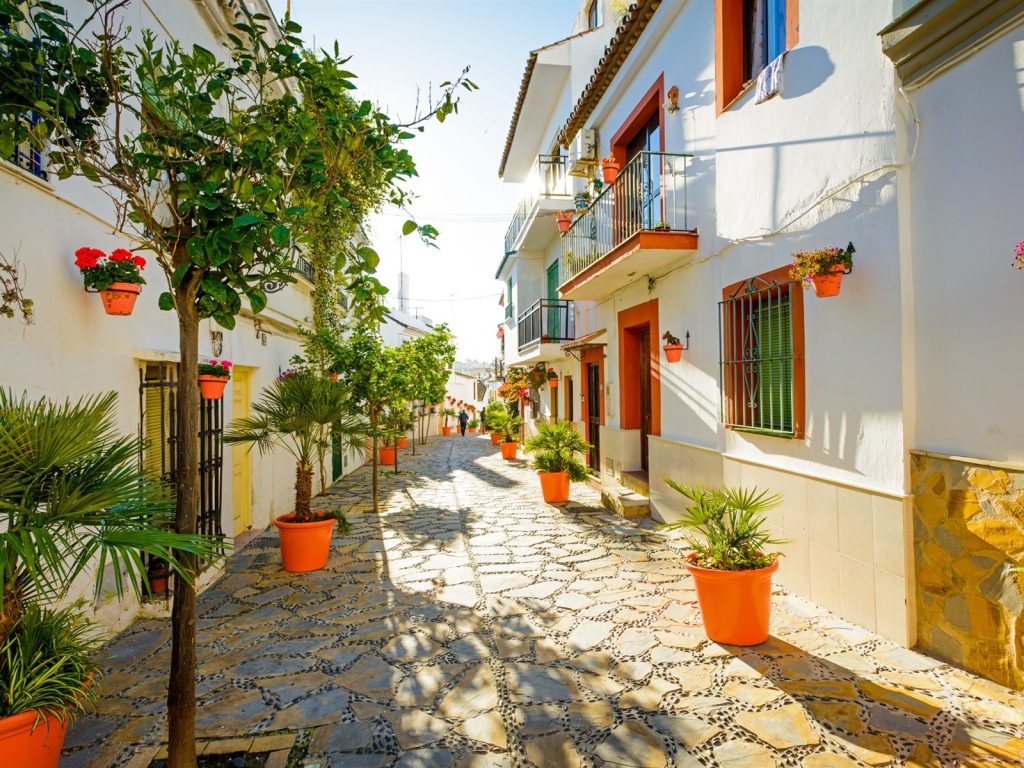
Estepona is located on the Mediterranean coast of the Costa del Sol, at the foot of the Sierra Bermeya Estepona. It is one of the few resorts in Spain that has managed to maintain an authentic Spanish character and provincial charm despite the well-developed tourist infrastructure. Together with Marbella, Estepona is considered one of the most beautiful places on the coast.
Today Estepona is one of the arts and crafts centres on the Costa del Sol. In the Old Town, you will find many souvenir shops with a large assortment of metal and leather products, ceramics, and Spanish jewellery.
Estepona beaches
The coast is covered with golden sand, and the entrance to the sea is gentle, which is why families with children like to come to the resort. Most beaches have showers, cabanas, toilets and beach cafes, but there are also wild ones for lovers of secluded relaxation. The only negative of this beach resort is the cold currents that periodically come here.
In the city itself, there are two beaches – La Rada and El Cristo. Playa La Rada is the most popular beach with a length of 2.5 km, it is awarded the Blue Flag, and many music festivals are held here in the summer. El Cristo, 700 m long, is located in a small beautiful bay. The coast is covered with medium-grained sand.
Playa de la Galera is located among the rocky cliffs and is rightfully considered one of the most beautiful. And Costa Natura is the only nudist beach. Playa de Arroyo Vaquero is suitable for divers and fishermen.
Entertainment and attractions in Estepona
Estepona was founded by the Romans. However, in the 20th century, the city was completely rebuilt. Flower Square is a favourite place for tourists to walk. Previously, bullfights were held here, and now there are a lot of cafes with terraces decorated with flowers.
The 22-meter clock tower with the Torre de Reloj bell tower built in the 15th century rises on the square, and the main treasure of the Old Town is the elegant Virgen de Los Remedios church of the 18th century.
In the old town of Estepona, streets with typical Andalusian architecture are perfectly preserved. Houses with white facades, balconies and windows are decorated with flowers, and sidewalks and plinths are lined with light ceramics.
On Plaza Augusto Suárez you can see the walls of the ancient castle – the fortress of Castillo San Luis of the 16th century. Previously, it was a powerful impregnable settlement of the Iberians, who built a fortress in the middle of the 15th century after the victory over the Moors.
